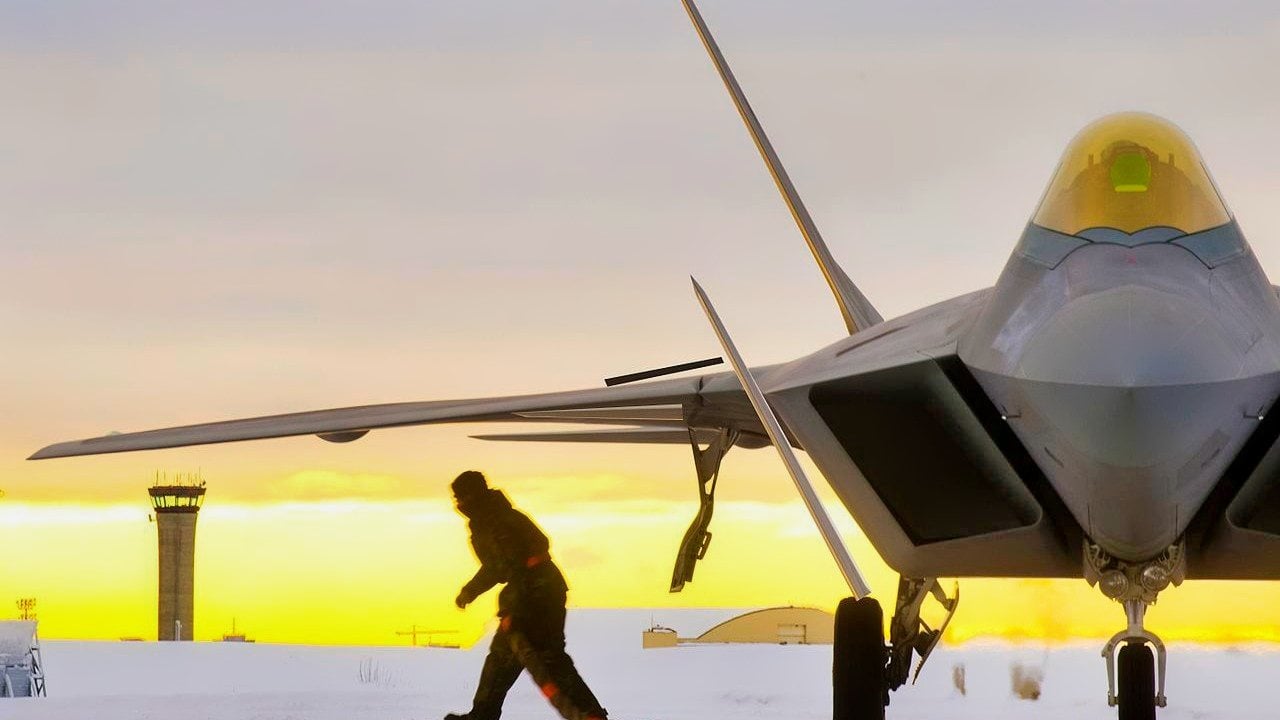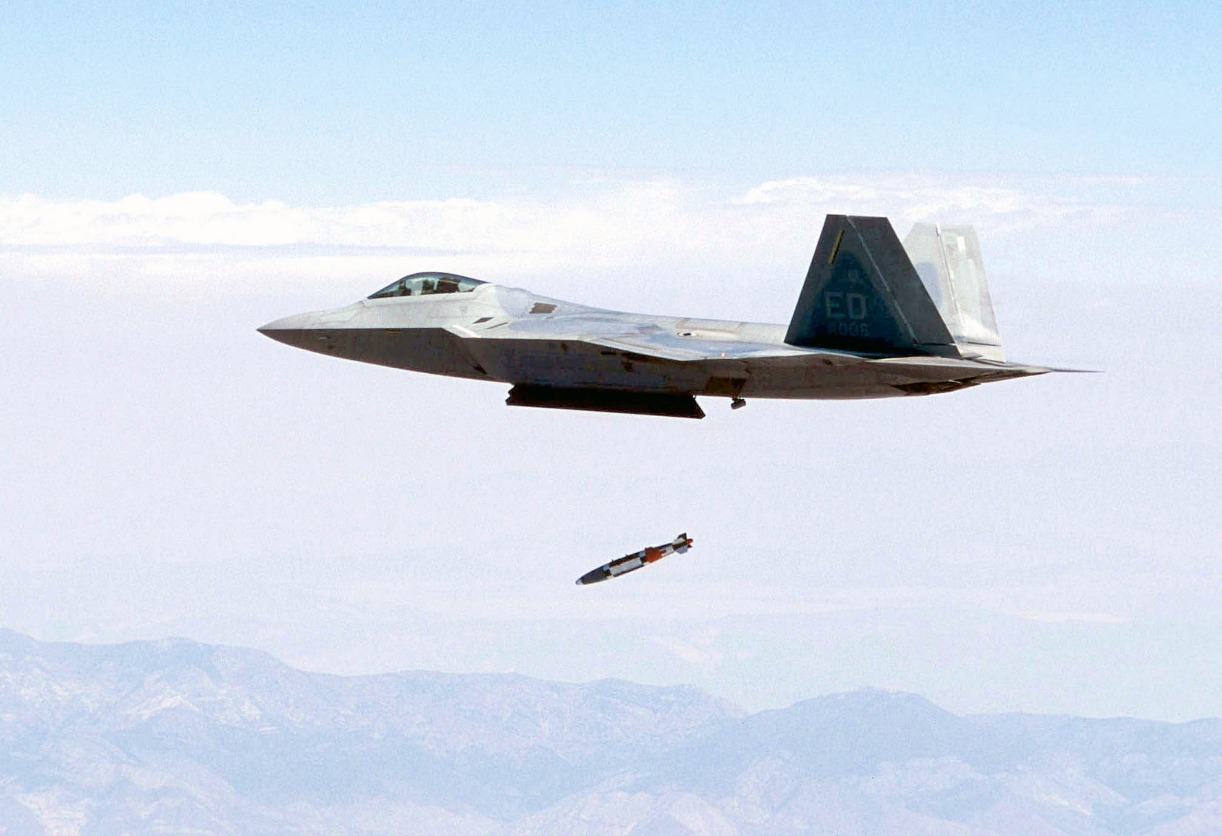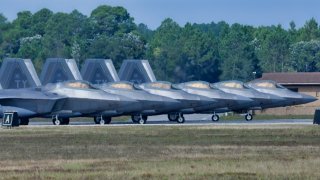The Air Force's F-22 Fighter Nightmare Has Just Started
The F-22 Raptor, the world's first operational fifth-generation fighter, will be retired by the 2030s. Despite its status as the premier air superiority aircraft, high operating costs and outdated technology are driving its phase-out.
Summary and Key Points: The F-22 Raptor, the world's first operational fifth-generation fighter, will be retired by the 2030s. Despite its status as the premier air superiority aircraft, high operating costs and outdated technology are driving its phase-out.

-Aviation expert James Smith highlights that the F-22's limited production limits its cost-efficiency, and its outdated stealth materials and avionics are less capable against modern threats.
-The Air Force's shift to the Next Generation Air Dominance fighter underscores the F-22's inevitable retirement.
Why the F-22 Raptor’s Retirement Is Inevitable Despite Its Capabilities
The F-22 Raptor was the world’s first operational fifth-generation fighter aircraft. It is still the world’s most capable air superiority aircraft. Yet the Air Force will start phasing out the F-22, with retirement planned sometime in the 2030s.
To some observers, retiring the world’s most capable air superiority fighter may seem like a mistake. But the F-22’s cost-to-utility ratio is hard to justify, especially as the Air Force invests in newer technology like the Next Generation Air Dominance sixth-generation fighter. The F-22 has become outdated in certain respects, meaning its days as an active duty aircraft are most certainly numbered.
Why Retire the F-22?
According to aviation expert James Smith, who shared his insights on Quora, “The USAF wants to retire the F-22 beginning around 2030 mainly due to two reasons: the F-22’s high operating costs, and the F-22’s obsolescence in a number of areas.”
According to Smith, “with regards to high operating costs, the F-22 fleet was not produced in sufficient quantities to replace the F-15, and therefore its logistics and supply chain do not benefit from economy of scale as much as jets like the F-16 and the F-35.”
The costs of the F-22 are further heightened because the F-22 uses old stealth materials that are expensive to maintain. Updating the F-22 with the F-35’s contemporary stealth materials is not possible, either. “These composites are not the same, so the structural strength of the jet and possibly the thickness of its skin would be affected,” Smith wrote. The new skin would possibly require recertification of the aircraft’s life limit, and it would likely require a redesign of panels and doors on account of a modified geometry.
Although hard to believe, the F-22 is indeed becoming outdated in certain respects. The aircraft is 30 years old. There has been a lot of progress in the intervening years with respect to aircraft range, avionics, and stealth technology.
The F-22 was designed for war in Europe, with a range of just 590 miles. In a war against China, where the F-22 would need to operate from far-flung bases like Guam, the F-22’s limited range and dependence on tanker aircraft would be a liability.
The F-22’s avionics are outdated, too. “For its core avionics the F-22 is considerably hampered by old ADA code with limited modularity, being run on old processors,” Smith wrote. Updating the F-22 to keep pace with peer aircraft like the Chinese J-20 would be cumbersome.
And of course, the F-22’s stealth technology is a generation behind. As air defense systems grow more sophisticated, the importance of up-to-date stealth technology increases, and the F-22’s survivability in contested airspace falls into question.

At a glance, retiring the F-22 may seem wrong. But because of the aircraft’s costs and obsolescence, the F-22’s retirement is an inevitability.
About the Author: Defense Expert Harrison Kass
Harrison Kass is a prolific defense writer with over 1,000 published articles. An attorney, pilot, guitarist, and minor pro hockey player, Harrison joined the US Air Force as a Pilot Trainee but was medically discharged. Harrison holds a BA from Lake Forest College, a JD from the University of Oregon, and an MA from New York University. Harrison listens to Dokken.
All images are Creative Commons.
From the Vault
Russia Freaked Out: Why the U.S. Navy 'Unretired' the Iowa-Class Battleships
Battleship vs. Battlecruiser: Iowa-Class vs. Russia's Kirov-Class (Who Wins?)


